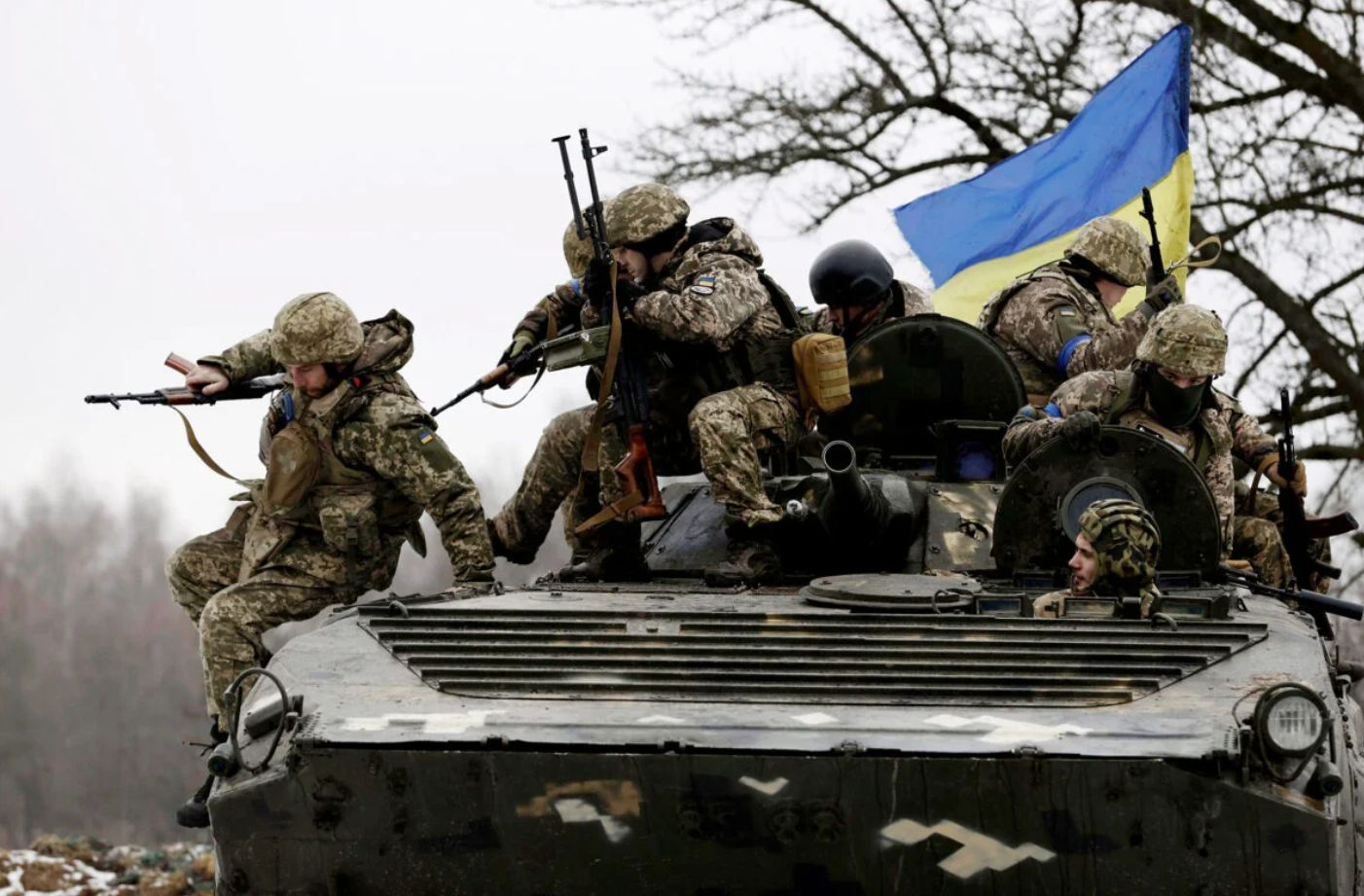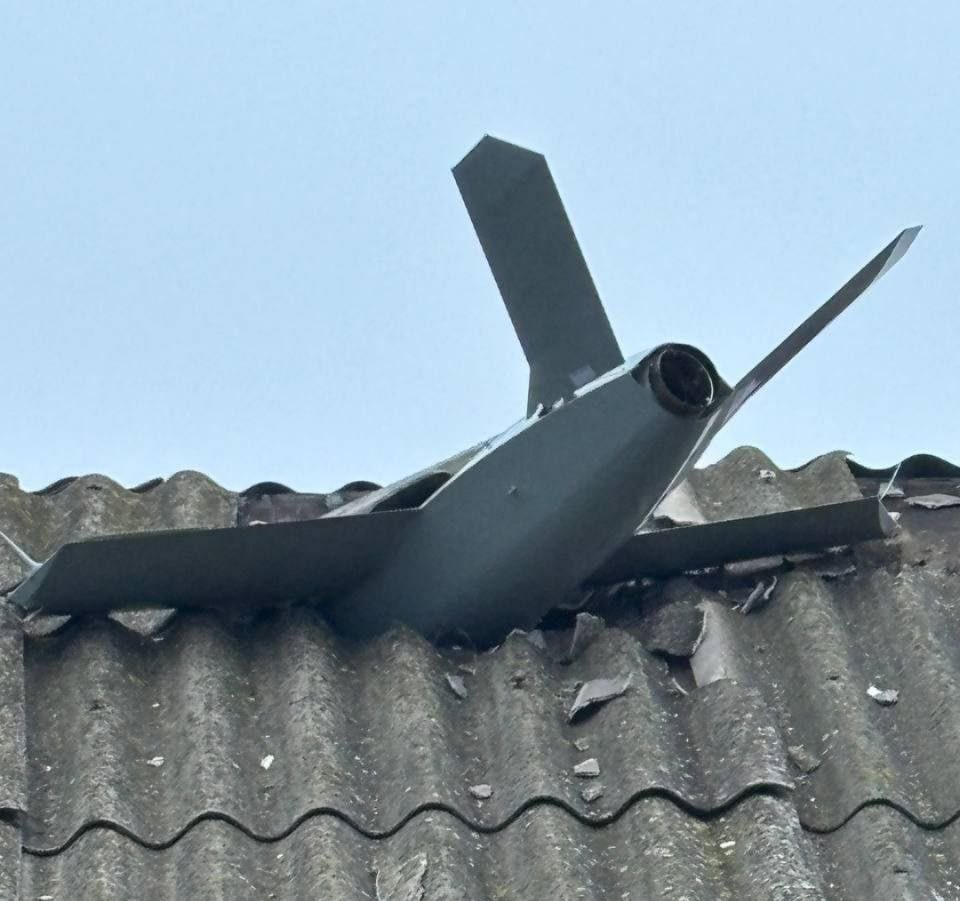Images of what appear to be the remains of a brand-new Ukrainian UJ-25 “Skyline” kamikaze drone on Russian territory have come to the fore when Kyiv is expanding its drone lineup and carrying out regular attacks.
Combat Debut Of Russia’s ‘Undefeatable’ Hypersonic Missiles In Ukraine War Ruined By Patriot SAMs? Experts Decode
The UJ-25, which is believed to have crashed into a house’s roof in the eastern Zaporizhzhiae region of Ukraine, where Berdyansk is under Russian control, was captured on camera. The drone’s exact target is unclear when writing this report. However, the warhead the drone was laden with allegedly did not explode.
This provides the first visual confirmation of Ukraine’s active deployment of advanced jet-powered kamikaze drones. However, the UJ-25 was initially seen in the background of a September CNN interview with Mykhailo Fedorov, Ukraine’s Deputy Prime Minister for Innovation, Education, Science and Technology, and Minister of Digital Transformation, concerning drone warfare in Ukraine.
In the interview, no particular information concerning the UJ-25 was offered. Still, the design was inspired by the Ukrjet UJ-23 Topaz, which was first created as a target drone for training, testing, and assessment purposes. Topaz can also be set up for intelligence, surveillance, and reconnaissance (ISR) tasks, according to Ukrjet.
Likely, the UJ-25 is roughly designed to carry out the same functions as the UJ-23 besides acting as an attack drone loaded with missiles to annihilate Russian targets. According to some predictions, it has a payload capacity of 10 kilograms and a 600 kilometers/hour speed. None of these details are officially verified.
⚡️Wreckage of the new 🇺🇦Ukrainian UJ-25 "Skyline" kamikaze jet drones that tried to attack the territory of the 🇷🇺Russian Federation this morning and were shot down/suppressed pic.twitter.com/WJzUYmW880
— 🇺🇦Ukrainian Front (@front_ukrainian) December 22, 2023
EurAsian Times does not have specific information on the UJ-25 due to its classified nature. However, observing the drone, military analysts have noted that it has very eerie similarities with the UJ-23, including a missile-like main body, forward-swept main wings, v-shaped tail arrangements, and top-mounted air intakes at the back of the fuselage that feed into a single tiny turbojet jet engine.
It would be more difficult for Russian forces to fight against if it were set up as a kamikaze drone, which could reach targets hundreds of miles faster than the other suicide drones in Ukraine’s arsenal.
Its characteristics would make it a perfect ruse to trick, divert, and agitate adversary air defense by acting as a decoy. This would be particularly beneficial given that Kyiv’s forces are trying to obliterate advanced Russian air defenses.
Military correspondent and expert Chuck Pfarrer, who has been keenly watching the equipment used in Ukraine, published an infographic of the UJ-25 Skyline drone on Platform X.
According to him, Skyline can perform Electronic Warfare/Countermeasures, function as a decoy, and perform Suppression of Enemy Air Defenses (SEAD) operations and long-strike missions.
The most important feature of the UJ-25 is its jet propulsion, regardless of possible variations. Because of its jet engine, Skyline can reach possible target locations more quickly.
The enemy troops would find it more difficult to detect, follow, and try to intercept it because of its speed, small size, and covert qualities. Moreover, since the UJ-23 is known to have some stealth features, the UJ-25 is also likely to have retained them.
Although Ukraine is ending the year without making any significant progress on the battlefield against Russia owing to a failed counteroffensive effort, the country has managed to retain a strong posture with the extensive attacks carried out deep inside Russian territory using its armed kamikaze drones.

For instance, Russia said on December 22 that it had shot down ten Ukrainian drones over the nation’s capital, Moscow, and various border regions. When the Ukrainian conflict first began, drone assaults on Russian soil were uncommon, but during the past year, they have increased in frequency, even in Moscow.
Ukraine Becoming A Drone Warfare Giant
Ukraine has widely deployed drones both on land and at sea. Social Media users have been sharing videos that seem to demonstrate how well Ukrainian drones can destroy Russian tanks and ships. According to estimates, Ukraine is losing over 10,000 drones to battle each month as a result of their current rate of deployment.
Videos that are making the rounds on social media seem to demonstrate just how successfully Ukrainian drones have been able to destroy Russian tanks and ships, albeit with some difficulties that operators have managed to power through.
The Ukrainian government plans to invest over US$1 billion to improve drone combat capabilities. Ukrainian military officials who began the war with a much superior enemy have realized that drones save the costs and lives of soldiers when they are used for bomb dropping, surveillance, or self-exploding on impact.
The use of kamikaze drones, started by Russia using its Shahed first, has been co-opted by Kyiv, which has unleashed its drones — some modified, some acquired, and some reportedly made from scratch.
Drones also produce enormous impacts, such as real-time battlefield mapping, damaging tanks and ships, and bringing Russian gains. They are more accurate than traditional artillery, which is scarce.

Mykhailo Fedorov, Ukraine’s minister of digital transformation, claims that by the end of this year, the government will have demonstrated its commitment to developing a cutting-edge “army of drones” and its usefulness to the war effort.
This year, the nation has already trained almost 10,000 new drone pilots. “A new stage of the war will soon begin,” Fedorov has pledged.
Although these drones are helpful, they are not invincible. EurAsian Times had previously reported nearly all of Ukraine’s drone first-person view (FPV) kamikaze drone attacks on Russian positions were failing due to Russian electronic warfare.
Their efforts have also been hampered by terrain and distance, where topographical features have prevented the radio link.
The introduction and proliferation of more advanced and longer-range drones like the UJ-25 Skyline may offset at least some of these problems. Even though the Russians are known for their capability to adapt and repel new tactics, introducing more recent and advanced technology would rattle the Russian troops.
The minister of strategic industries for Ukraine announced earlier this week that Kyiv intends to create a million first-person-view (FPV) drones, which are in high demand on the front lines, and more than 11,000 medium- and long-range assault drones next year.
Oleksandr Kamyshin, the minister, said on Telegram Messenger, “All production facilities are ready, and contracting for 2024 begins”. The number comprises a minimum of 1,000 drones that have a range exceeding 1,000 kilometers (600 miles).
- Contact the author at sakshi.tiwari9555(at)gmail.com
- Follow EurAsian Times on Google News




